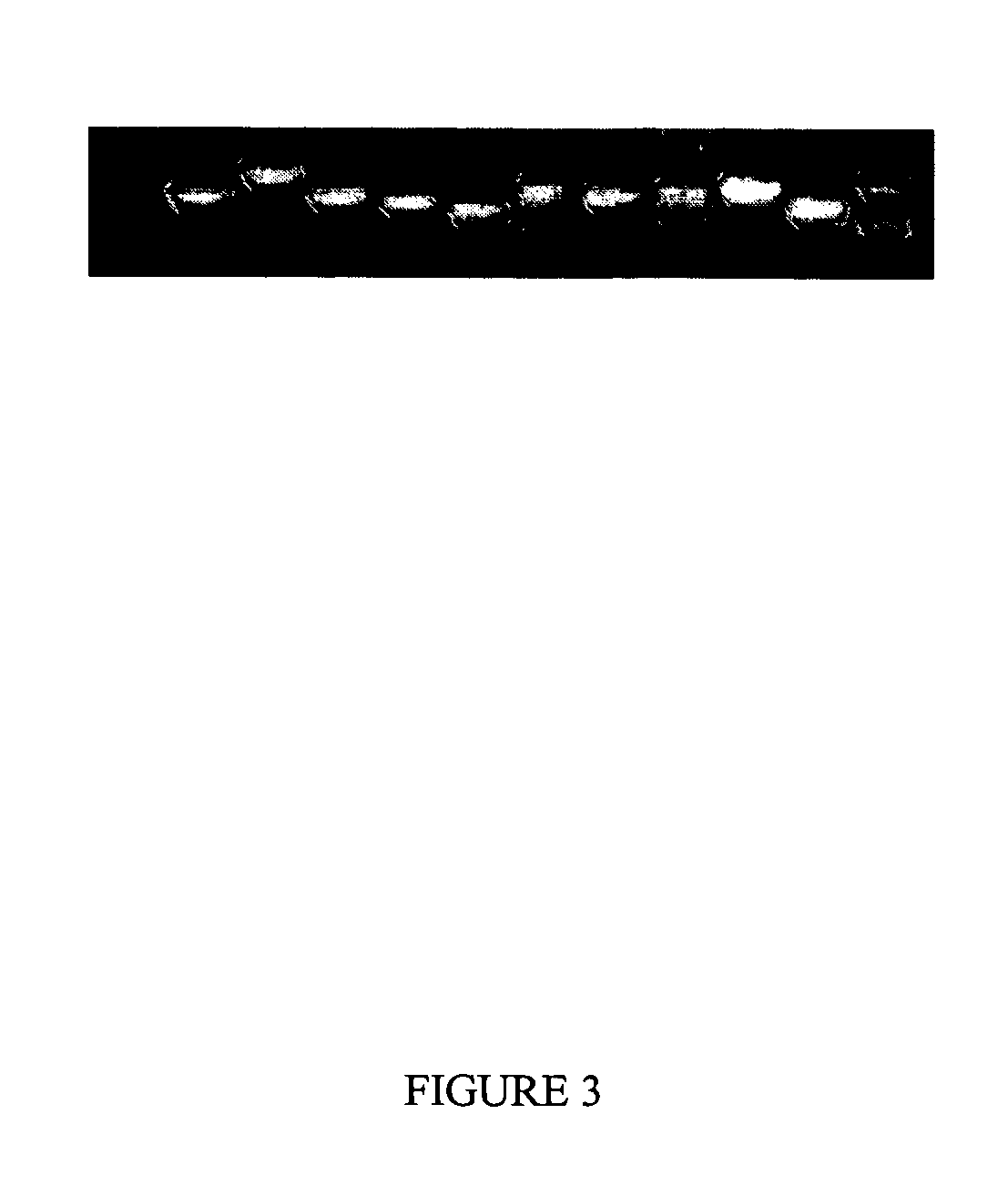High-throughput method of DNA immunogen preparation and immunization
a high-throughput, immunogen technology, applied in the field of dna immunization, can solve the problems of incompatibility with high-throughput screening, inability to meet the need for high-throughput production of purified antigens to immunize animals, and inability to use overlapping methods, etc., to achieve rapid and cost-effective preparation and induce robust immune responses.
- Summary
- Abstract
- Description
- Claims
- Application Information
AI Technical Summary
Benefits of technology
Problems solved by technology
Method used
Image
Examples
example 1
Generation of High Quantities of Expression-Competent PCR Constructs
[0114] DNA constructs were prepared as diagrammed in FIG. 1 as follows.
[0115] 1A. Designing PCR Primers with Special Restriction Sites
[0116] A unique restriction site in each of the two primers that were to be used to amplify the protein-encoding region of choice was provided. The two restriction sites, upon digestion with the corresponding restriction enzymes, yielded overhang ends with different sequences.
[0117] For this purpose, the Sfi1 restriction enzyme was a convenient choice, however other restriction enzymes will also find use with the methods. Two Sfi1-recognizable sequences (such as GGCCATGAAGGCC (SEQ ID NO:1) and GGCCGAGGCGGCC (SEQ ID NO:2)), differing in the middle in a 5 basepair region (underlined) flanked by the Sfi1 recognition sequences, was built into the two primers (pSA and pSB, FIG. 1). This allowed the resulting PCR product to be digested with the Sfi1 enzyme, yielding different overhang s...
example 2
Production of Plasmid Adjuvant
[0132] A bacterial plasmid construct was produced for use as an adjuvant for co-electroporation. The plasmid, named SlcIl4IresCD40LpORF (SEQ ID NO:3), has the configuration of EF1alpha-SLC / IL4 fusion-IRES-CD40 ligand as depicted in FIG. 5 and FIGS. 8A-B. The plasmid was produced by PCR linking the different fragments into pORF-mCD40L v.15 (InvivoGen, San Diego, Calif.). This plasmid contains the CD40 ligand sequence. The IL4 sequence was from pORF-mIL04 v.11 (InvivoGen). The SLC and IRES sequences were from pGT60mExodus2 v.02 (InvivoGen).
example 3
Immunization of Animals Via In Vivo Electroporation
[0133] Animal immunization was achieved electrically through the electroporation of leg tissues with the antigen-encoding DNA. Briefly, the TA (tibialis anterior) muscle regions of the two hind legs were shaved and 50 μl of the DNA fragments (5-15 microgram) in PBS (phosphate-buffered saline) were injected into each muscle. Using an electroporator from BTX Molecular Delivery Systems (ECM 830), electric shocks were delivered as: 100 volts; pulse length of 50 milliseconds, 200 millisecond pulse interval, 5 pulses total. Boost electroporation, performed identical to the primary immunization, was carried out 2 weeks after the primary. The mice were sacrificed 4 weeks later for antisera for analyses.
[0134] Five groups of Balb / c mice were also immunized via electroporation with 5 micrograms PSA (human prostate specific antigen)-expressing DNA fragments (prepared according to the procedures above) along with adjuvant plasmid or its non-c...
PUM
| Property | Measurement | Unit |
|---|---|---|
| nucleic acid immunization | aaaaa | aaaaa |
| length | aaaaa | aaaaa |
| full-length | aaaaa | aaaaa |
Abstract
Description
Claims
Application Information
 Login to View More
Login to View More - R&D
- Intellectual Property
- Life Sciences
- Materials
- Tech Scout
- Unparalleled Data Quality
- Higher Quality Content
- 60% Fewer Hallucinations
Browse by: Latest US Patents, China's latest patents, Technical Efficacy Thesaurus, Application Domain, Technology Topic, Popular Technical Reports.
© 2025 PatSnap. All rights reserved.Legal|Privacy policy|Modern Slavery Act Transparency Statement|Sitemap|About US| Contact US: help@patsnap.com



